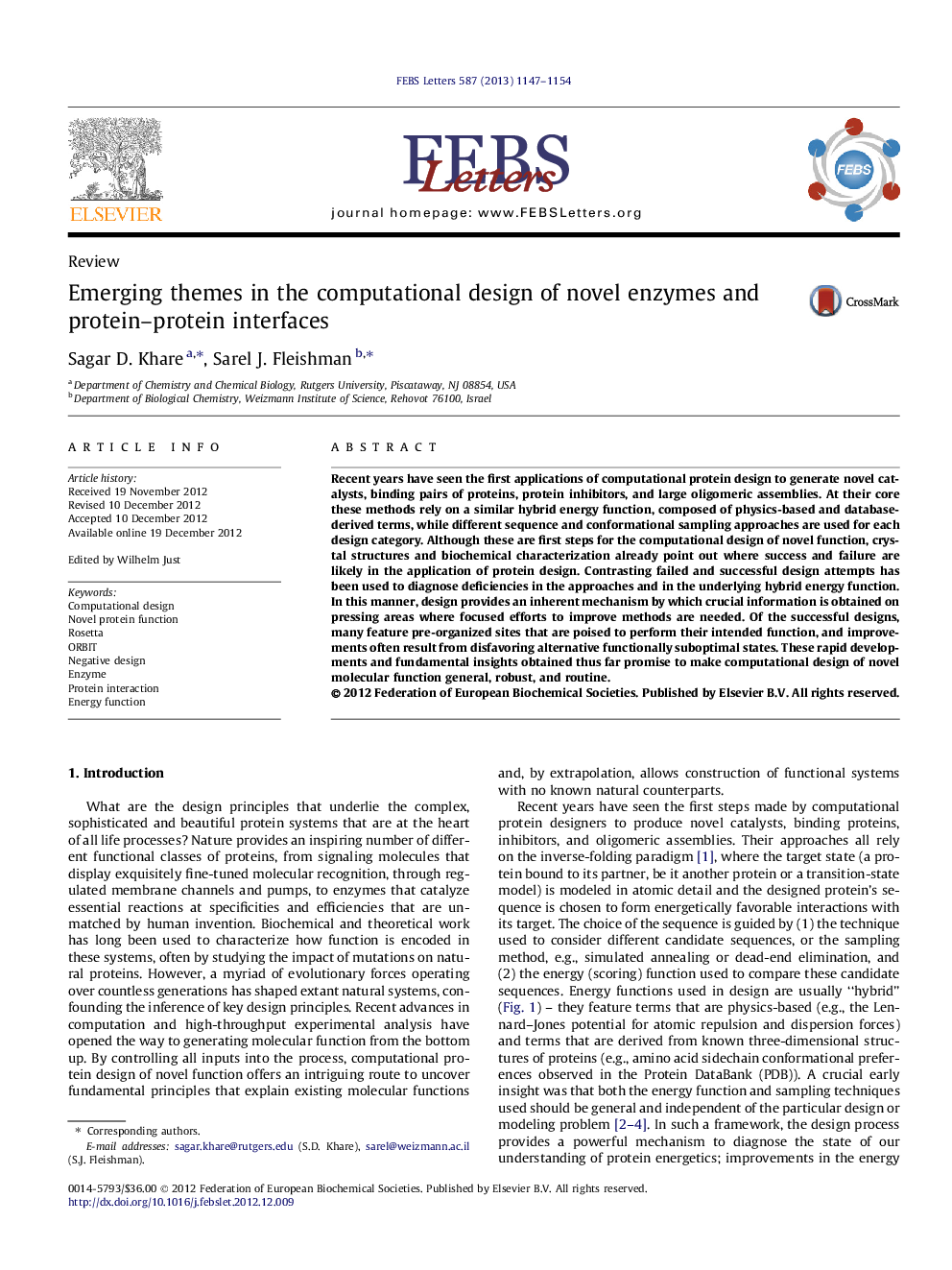| Article ID | Journal | Published Year | Pages | File Type |
|---|---|---|---|---|
| 10871039 | FEBS Letters | 2013 | 8 Pages |
Abstract
Recent years have seen the first applications of computational protein design to generate novel catalysts, binding pairs of proteins, protein inhibitors, and large oligomeric assemblies. At their core these methods rely on a similar hybrid energy function, composed of physics-based and database-derived terms, while different sequence and conformational sampling approaches are used for each design category. Although these are first steps for the computational design of novel function, crystal structures and biochemical characterization already point out where success and failure are likely in the application of protein design. Contrasting failed and successful design attempts has been used to diagnose deficiencies in the approaches and in the underlying hybrid energy function. In this manner, design provides an inherent mechanism by which crucial information is obtained on pressing areas where focused efforts to improve methods are needed. Of the successful designs, many feature pre-organized sites that are poised to perform their intended function, and improvements often result from disfavoring alternative functionally suboptimal states. These rapid developments and fundamental insights obtained thus far promise to make computational design of novel molecular function general, robust, and routine.
Related Topics
Life Sciences
Agricultural and Biological Sciences
Plant Science
Authors
Sagar D. Khare, Sarel J. Fleishman,
